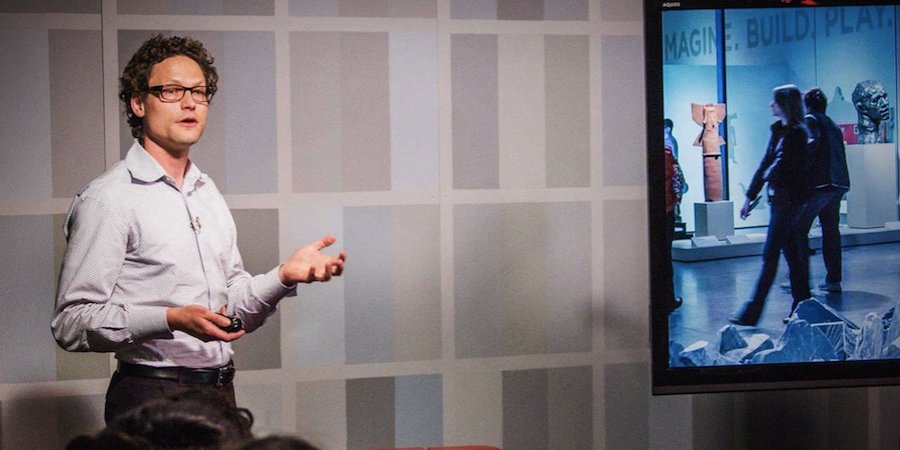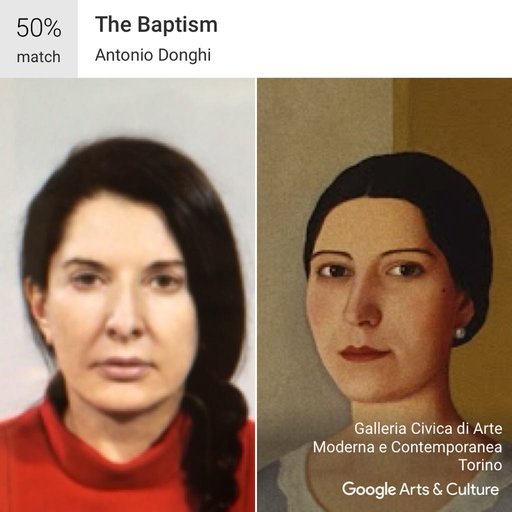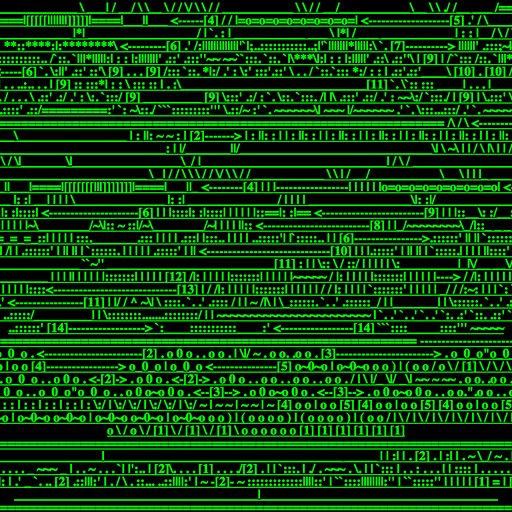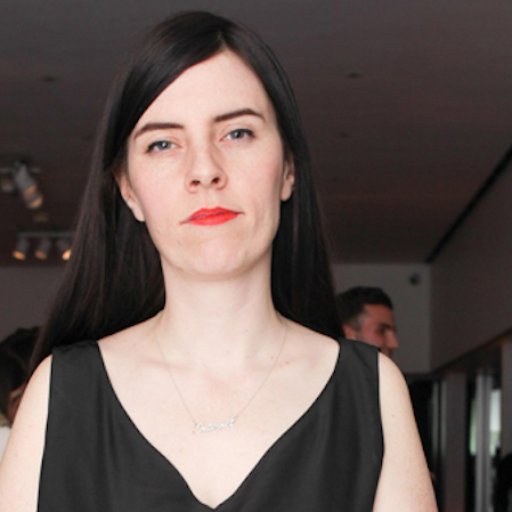How do art museums engage audiences addicted to screens? Some dismiss gadgets altogether as technological frippery, while others indulge plugged-in habits, going so far as to hand out iPads with apps that narrate exhibitions. From a digital conservator to a head of a laboratory matchmaking artists and tech companies in Silicon Valley, here are six more critical players revolutionizing the art and tech scene today.
READ THE FIRST PART OF THE SERIES LOOKING AT MOVERS IN THE ART-TECH SPHERE HERE
SCOTT STULEN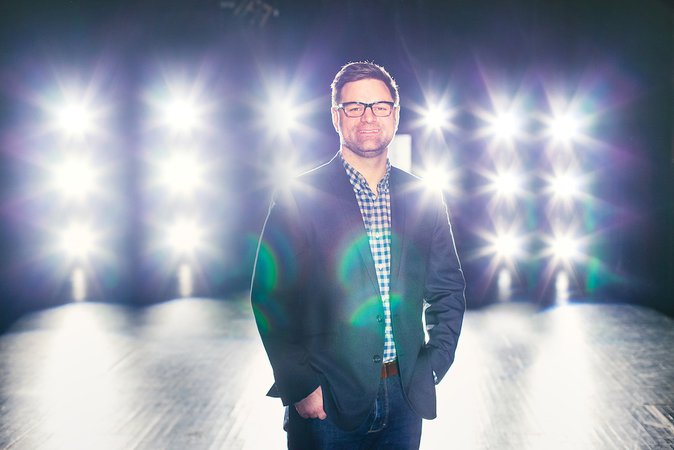
MUSEUM: Indianapolis Museum of Art (IMA)
POSITION: Curator of Audience Experiences and Performance (first to hold this title)
WHAT HE DOES: Leading a team of four, Stulen curates events at the museum, from traditional lectures to adventurous performance interventions staged across the sprawling 100-acre premises. Think of his position as the marriage of a time-based art curator with art historical training and a public programmer tasked with engaging audiences of all stripes. He started five weeks ago, so even he is still figuring out what he does at the IMA.
KILLER APP: At the Walker Art Center in Minneapolis, where he worked from 2008 until now, Stulen launched the public program called Open Field, which famously hosted the Internet “Cat Video Festival” in 2012. Showing YouTube videos of the Internet’s favorite furry meme—pouncing, mewing, acting imperial—on a big screen in the museum’s commons, the festival made public a viewing experience usually confined to a smartphone or personal computer screen. The festival ended up drawing some 10,000 people to the Walker field in its summer run, reinventing (or else nostalgic for) the shared experience of the Rocky Horror Picture Show in the digital age.
FUTURISTIC PLANS: Stulen is not about awesome gadgetry and fancy apps—he's into old fashioned moving pictures, only amped with an Internet-age metabolism. In his new role, he plans to keep on disassembling the rituals surrounding Internet videos. Next up? Biker video clips: epic crashes, bike messengers in Brussels, famous movie sequences. Another video projection festival slated for early 2015 will activate a whole range of screens across the city in the spirit of a guerilla art project, from outdoor projections downtown to QR-activated screens to sports bar televisions, all emitting something completely unexpected.
TWITTER STATS: 2K (tweets @middlewest )
SHELLEY BERNSTEIN
MUSEUM: Brooklyn Museum
POSITION: Vice Director of Digital Engagement and Technology
WHAT SHE’S DOING: While its borough is home to more artists than anywhere else in the United States, the Brooklyn Museum still depends on robust digital programing to lure eyes from Manhattan’s many cultural attractions into the museum edging Prospect Park. Originally hired as a curatorial assistant in the Egyptian art department, Bernstien was bumped up a few thousand years to head the institution's technology department. In that role she converts visitors into curators, such as with the community-curated show “Go,” which opened over 1,700 artist studios in Brooklyn to the public and then allowed audiences to nominate their favorites to be included in a show at the museum in 2012.
KILLER APP: Bernstein is quick to reel off the stats she’s helped build in her crowd-sourced shows. With “Go,” an estimated 18,000 people made approximately 147,000 studio visits. There were 3,344 evaluators who cast 410,089 votes on the 389 photographs submitted for the 2008 exhibition “Click.” Then there were 4,481 participants who created 175,183 ratings determining the works installed in the exhibition for the “Split Second.” At the Brooklyn Museum, you vote with your mouse.
FUTURISTIC PLANS: Bernstein tells Artspace that the Museum has visitor experience project in the works, but can’t discuss the details. “We believe [the project in pilot testing] will become a large-scale digital implementation.” More to come from Brooklyn.
TWITTER STATS: 3K followers (tweets @shell7)
JAKE BARTON
MUSEUM: Clients include the Cleveland Museum of Art (CMA), SFMOMA, BMW Guggenheim Lab, and the Cooper-Hewitt National Design Museum
POSITION: President of Local Projects, a "media design firm" in New York City
WHAT HE DOES: The recipient of a National Design Award in Interaction Design in 2013, a TED Talk speaker, and among Fast Company's “Most Creative People in Business," Barton is best known in the art world for consulting the Cleveland Museum of Art’s $350 million expansion that intelligently integrated advanced gadgetry and venerated objets d’art. While outside the institutional apparatus, Barton has established a convincing template for how to use technology in museums with this Midwest project.
KILLER APP: Walking into the CMA, the viewer meets a 40-foot-wide touch screen showing images of the 3,000 objects that are on display in the galleries. Tap one of the pictures, and associated objects populate around it; iPads are also available for rent here for $5, with which visitors can create their own art treks, look at the original display context of a given artwork, and watch snappy educational videos. Even the museum selfie is taken to the next level: through facial recognition, special cameras can match a visitor’s digital self-portrait with a work in the collection. Somehow it's comforting—despite the rapid speed of technological advancement, human expression remains constant across the centuries.
TWITTER STATS: 5K followers (tweets @Jake_Barton)
AMY HEIBEL
MUSEUM: Los Angeles County Museum of Art
POSITION: Vice President of Technology, Web, and Digital Media
WHAT SHE DOES: At LACMA, Heibel has made mobile apps, commissioned online artist work, and, most recently, resurrected the LACMA Art + Technology Lab, originally run from 1967 to 1971 and famous for pairing artists like Claes Oldenberg, Andy Warhol, and Robert Rauschenberg with big corporations to make art. (Art historians have even credited the program for determining the trajectory of James Turrell.) Today, the re-launched lab matches artists with California companies like Google, SpaceX, NVIDIA, DAQRI, and Accenture.
FUTURISTIC PLANS: The collaborations brokered by the lab grant artists access to sensors, big-data-calculating machines, and robotics, among other cutting-edge technologies. “Impractical application” of tech is the underlying principle here, according to Heibel. Last week, artists Rachel Sussman, Tavares Strachan, Annina Rüst, John Craig Freeman, Taeyoon Choi, and E. Roon Kang were announced as the first grant recipients. With up to $50,000 in funding, they will realize projects involving robots, rockets, and data on dead stars with the support of corporate techies.
KILLER APP: Originally an investigative reporter who contributed to a PBS Frontline documentary, Heibel left journalism to advise museums on how to tell stories about art objects in the digital age. As the global creative director of a media production company, Heibel designed multimedia and mobile content for art institutions across the globe—overseeing over 200 projects a year—for the Louvre and the National Gallery of London as well as the Metropolitan Museum of Art and SFMoMA, among many other institutions. In 2006, she helped sell the company to Discovery Communications before joining LACMA.
TWITTER STATS: 407 followers (tweets @aheibel)
SHYAM OBEROI
MUSEUM: Dallas Museum of Art (DMA)
POSITION: Director of Technology and Digital Media
WHAT HE DOES: With job experience in IT, software development, digital imaging, and online collections, Oberoi was hired last month to manage a range of projects in Dallas, including leading the Web team and digitizing the museum’s permanent collection. In a statement released by the DMA, Oberoi said: “It is tremendously exciting to have the opportunity to be a part of an institution that is so committed to exploring the digital intersection of art, audience and technology.” This was his first week on the job.
KILLER APP: At the Metropolitan Museum of Art, where he had worked been since 2006, Oberoi managed collections information services. Most notably, in 2011 Oberoi helped to launch the Met’s new website, the first overhaul in 10 years, digitalizing over 340,000 objects in the collection. Today he's assured of being given a broad mandate at the DMA—the museum's director, Maxwell Anderson, is himself a highly regarded technocrat, and was responsible for ushering in a slew of high-tech initiatives (like ArtBabble) at the Indianapolis Museum of Art when he was the director there.
FUTURISTIC PLANS: Oberois has barely settled into his new gig, and has yet to announce his future plans for Texas. The museum's deputy director, Robert Stein, said in a statement, “With his significant expertise and his successful track record of managing complex projects, I am confident that under [Oberoi’s] direction the DMA will make major strides in reaching audiences with new digital initiatives while maintaining the museum’s tradition of excellence online.”
TWITTER STATS:6 followers (tweets @ShyamOberoi)
HEATHER CORCORAN
MUSEUM: Rhizome, overseen by the New Museum
POSITION:Executive Director
WHAT SHE DOES: Replacing longtime director Lauren Cornell in 2012, Corcoran helms the pioneering online journal and digital archive overseen by the New Museum. Presenting, critiquing, and preserving art that involves technology, Rhizome was started in 1996 by the visionary Mark Tribe (now head of the SVA's MFA program) as a small email list for Web artists and became famous under Cornell for its Seven on Seven conference pairing technologists and artists to hatch a new concept over the course of a day. Along with leading this conference, Corcoran finds ways to conserve old hardware and software that doesn’t work on OS systems today.
KILLER APP: Corcoron comes by way of the United Kingdom, where she was previously deputy director of London's Film and Video Umbrella and curated exhibitions for the Barbican Art Gallery in London and the Foundation for Art and Creative Technology in Liverpool. She is also a techie, having coded a Linux distribution for media art—making her an asset in the organization's conservation front.
FUTURISTIC PLANS: As technology insinuates itself further into our culture, the focus of an organization like Rhizome could become more diffuse. But Corcoron insists that as culture goes further and further into the digital realm, “it becomes more important to highlight the role of technology and its ever-changing practices and problems, not less. Wherever this conversation is headed, we'll be at the forefront—originating nuanced, sophisticated, and informed takes on these topics, in dialogue with all disciplines.”
TWITTER STATS: 1,065 followers (tweets @heathercorc)











